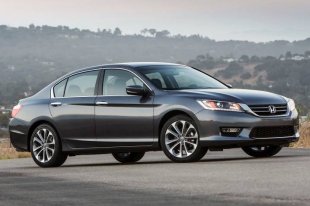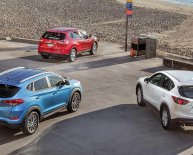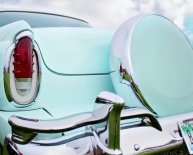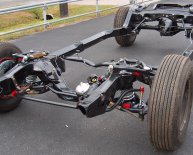
Comparison car shopping

Car Buying Learning Center
How does the cost of leasing compare to buying the same car new in terms of out-of-pocket costs? Or if you decide to buy a used car, how much more will that save you? And finally, what do those costs look like in the long run?
These are important questions for consumers who want to carefully manage their automotive expenses over the years. It's hard to give one definitive answer that covers all people and all situations. But here we will divide this question into two parts:
1. An analysis of the cold, hard costs of three different ways to get a midsize family sedan: leasing, buying new and buying used.
2. A discussion of some intangible, non-monetary issues that might affect your decision.
One Car, Three Financing Methods
In this analysis we look at an average car ownership period, which IHS Inc. estimates at almost six years. We then look at Edmunds.com transaction data for the financing information on a midsize sedan such as a Toyota Camry or a Honda Accord, like the 2015 vehicle pictured above. For each category (leasing, buying new or buying used), the averages in this article are based on thousands of recent transactions across the United States. These reveal the average cost of the car, interest rate, down payment and monthly payment.
Since most people lease for three years, we compared two lease cycles to one buying cycle for new and used cars. In other words, in the buying comparisons, the person purchased the car, financed it for five years (60 months) and then had one payment-free year of ownership. (We don't actually recommend financing a used car for 60 months but, for purposes of comparison, we have included those figures here.)
Here's how we structured the different deals:
Leasing: The average midsize car lease is based on a car that sells for $24, 775 with drive-off fees of $1, 154. This results in a $294 monthly payment for three years.
Buying New: When buying the same car, the average down payment on a five-year loan is $4, 104. The average interest rate is 1.64 percent, resulting in a monthly payment of $400.
Buying Used: The average price of a similar 3-year-old midsize sedan is $15, 688. The average interest rate is much higher: 6.04 percent. The average down payment is $2, 304. The monthly payment is $301. (Fewer low-interest deals are available for used cars, and the credit scores of people shopping in this category are lower, according to Edmunds data.)
After six years, here are the total out-of-pocket costs of each financing method:
|
Leasing |
Buying New |
Buying Used |
|
|
Total out-of-pocket costs |
$23, 476 |
$28, 104 |
$20, 364 |
In terms of out-of-pocket expenses, leasing costs $4, 628 less over six years than buying a new car, excluding any repair costs the new car might incur. The out-of-pocket cost of buying a used car is $3, 112 cheaper than leasing and a whopping $7, 740 cheaper than buying a new car. Again, any costs of repair for the used car are excluded here.
Here is something essential to remember about the apparent lower cost of leasing versus buying new: At the end of two leasing cycles, the person who leases doesn't own the car. He or she has to start a new lease-or-buy cycle. Meanwhile, the person who bought a new car now owns a 6-year-old vehicle worth about $9, 687 on the private-party market, according to Edmunds data. The person who bought the used car now owns a nine-year-old car worth about $4, 794.
When we deduct the current value of the new and used car from the out-of-pocket costs, the long-term cost picture changes:

















